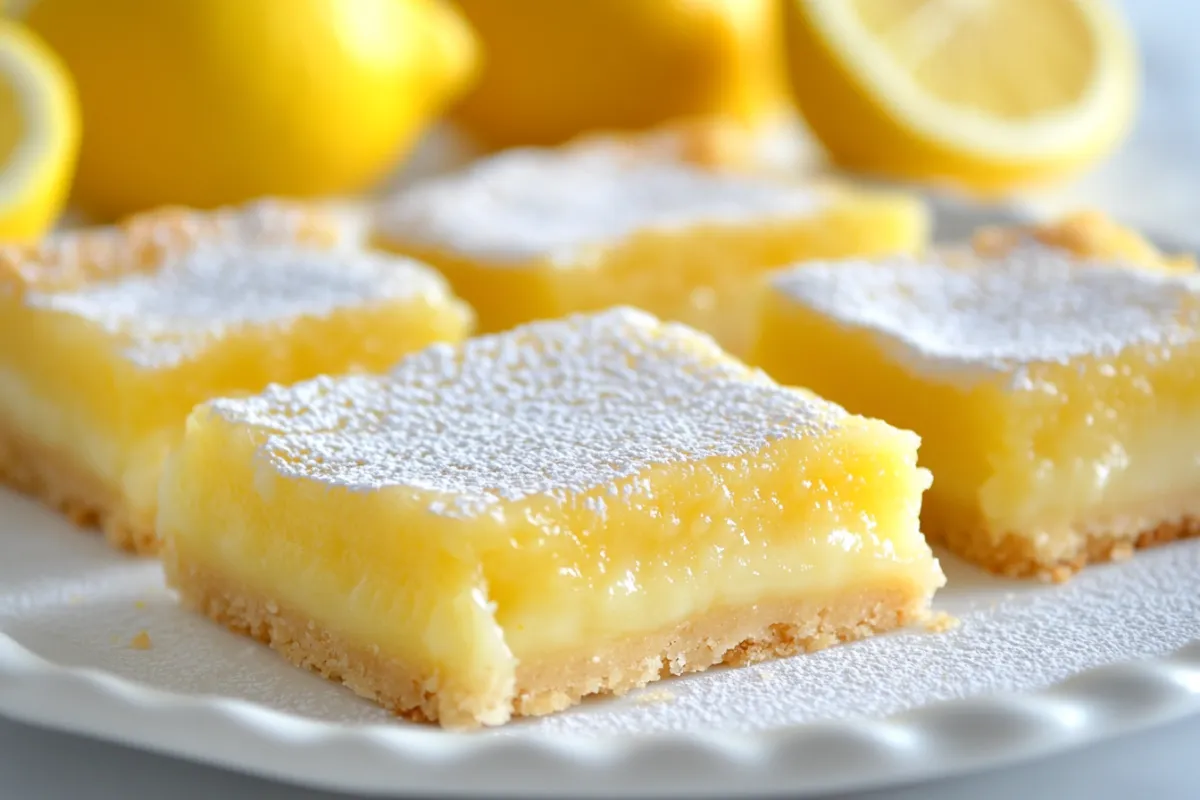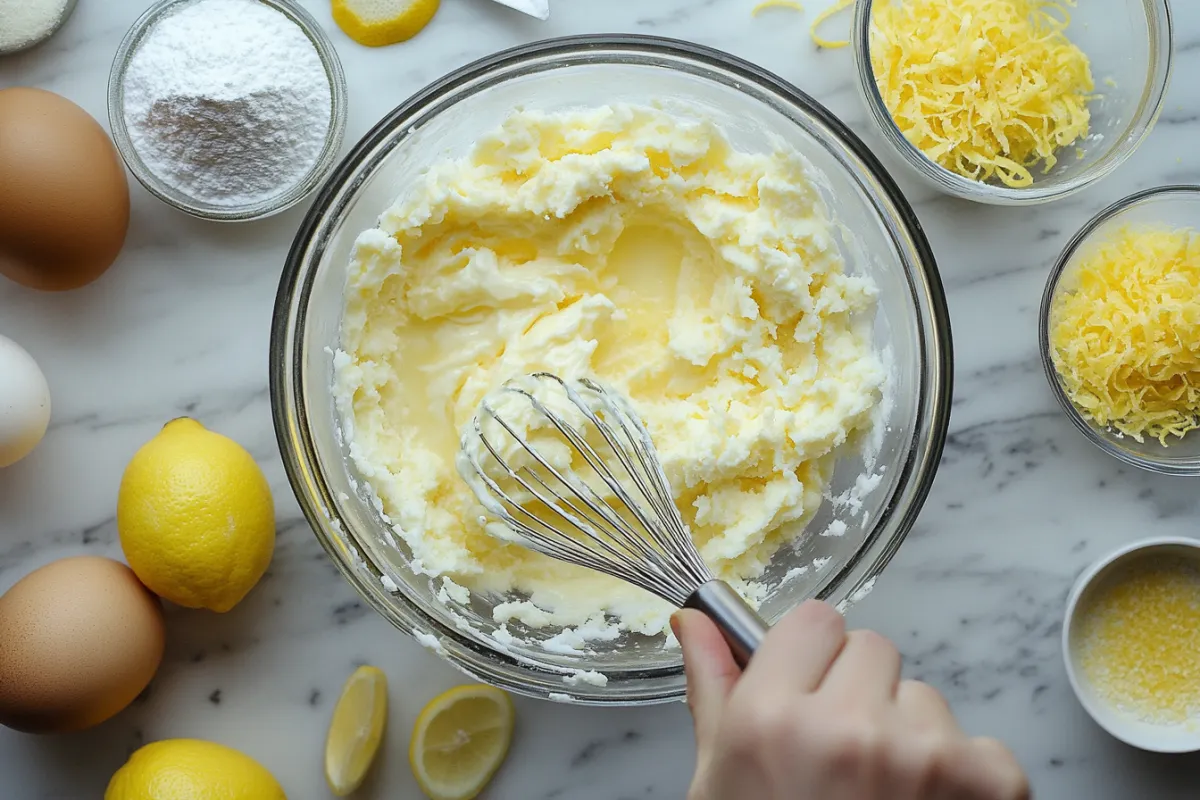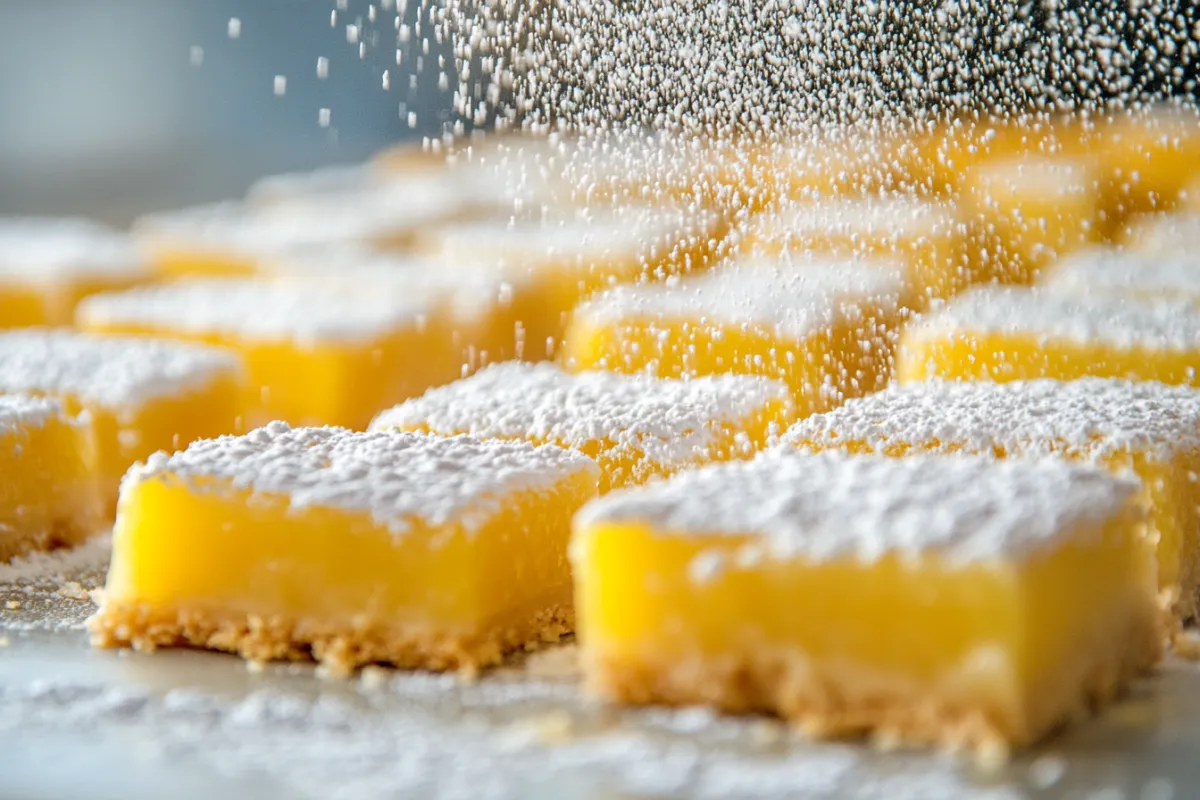Troubleshooting and Solutions for Perfect Lemon Bars
Lemon bars are one of those delightful desserts that combine the tangy, refreshing taste of lemons with the richness of a buttery shortbread crust. They’re a staple at summer gatherings, holiday tables, or whenever you’re in the mood for a zesty treat. However, for many home bakers, one issue often crops up: bubbling on the top of the lemon bars. The bubbles may form during the baking process and affect the texture or appearance of this otherwise perfect dessert.
If you’ve ever wondered “Why did my lemon bars bubble?”, this article will take you through the reasons behind this common baking issue and, more importantly, how to fix it and avoid it in the future.
Table of Contents
- Introduction to Bubbling in Lemon Bars
- The Science Behind Bubbling in Lemon Bars
2.1. The Role of Ingredients in Bubbling
2.2. Oven Temperature and Baking Conditions
2.3. Chemical Reactions in Baking - How to Prevent Bubbling in Lemon Bars
3.1. Proper Mixing Techniques
3.2. Controlling Oven Temperature and Baking Time
3.3. Using the Right Baking Tools - What to Do If Your Lemon Bars Have Already Bubbled
4.1. How to Salvage Bubbled Lemon Bars
4.2. Garnishing to Hide Imperfections
4.3. Baking Again for Best Results - Common Mistakes That Cause Bubbling
5.1. Overmixing the Batter
5.2. Incorrect Oven Temperature
5.3. Using the Wrong Baking Pan - FAQ about lemon bars bubble
6.1. Why did my lemon bars bubble in the oven?
6.2. How do I stop my lemon bars from bubbling?
6.3. Can I still eat lemon bars if they bubbled?
6.4. Should I use baking powder in lemon bars?
6.5. How do I make lemon bars smooth on top? - Conclusion: Baking Perfect Lemon Bars
1. Introduction to Bubbling in Lemon Bars
What Are Lemon Bars?
Lemon bars are a classic dessert consisting of a tangy lemon filling layered over a buttery shortbread crust. The contrast between the rich, crumbly crust and the smooth, citrusy filling is what makes this dessert so beloved. Typically dusted with powdered sugar, lemon bars are visually appealing as well as delicious. They’re commonly served as a snack or dessert for casual gatherings and celebrations alike.
Common Issues When Baking Lemon Bars
Though lemon bars may seem straightforward to make, they can present some challenges, especially if you’re aiming for that perfect appearance and texture. Among the most common issues reported by bakers are:
- Cracks on the surface
- Sinking centers
- Bubbling or air pockets forming on the top
This article will focus on bubbling, which can be frustrating because it creates an uneven, sometimes unattractive top layer. While bubbles don’t typically affect the taste, they can alter the overall presentation and texture, which may leave you feeling like something went wrong with your recipe.
Why Addressing Bubbling is Important
Though bubbling in lemon bars might seem like a minor problem, it can have a significant effect on the final product:
- Texture: Bubbles can create an uneven texture, making the bars look and feel less smooth.
- Appearance: Lemon bars are known for their smooth, glossy tops. Bubbles mar the surface, making them look messy or overbaked.
- Serving: If the bubbles are large enough, they can create holes when you slice the bars, making it harder to present them neatly.
Fortunately, bubbling can be avoided, and in this guide, we’ll explain how to prevent it and what to do if it happens.
2. The Science Behind Bubbling in Lemon Bars
To understand why bubbling occurs, we need to break down the science of baking and how ingredients and baking methods influence the final product. Several factors can contribute to bubbles forming on the top of your lemon bars, including how you handle the ingredients, the oven temperature, and even the tools you use.
2.1 The Role of Ingredients in Bubbling
Eggs and Air Incorporation
The eggs in lemon bar filling serve two main purposes: structure and thickening. However, if you beat the eggs too much while mixing the filling, you may inadvertently incorporate excess air into the batter. This air becomes trapped during baking, expanding and creating bubbles that rise to the surface.
Solution: To avoid this, mix the eggs gently and avoid overbeating them. You want to combine the eggs until the whites and yolks are fully mixed, but not whipped. Overmixing is one of the leading causes of bubbles in baked goods, not just lemon bars.
Lemon Juice and Acidic Reaction
Lemon juice, being an acidic ingredient, can sometimes cause a reaction with other ingredients in the filling. If you mix the lemon juice too vigorously with the eggs or sugar, this can also lead to air being incorporated, contributing to bubbling.
Solution: Always add the lemon juice slowly into the mixture, stirring it in gently. This will reduce the risk of trapping air and causing bubbles.
2.2 Oven Temperature and Baking Conditions
High Heat and Rapid Expansion
Baking at too high a temperature can cause the air pockets in your filling to expand rapidly. This can result in visible bubbles forming on the surface. High heat can also cause the edges of your lemon bars to set too quickly, trapping air in the center and leading to bubbles as the middle tries to cook through.
Solution: Always follow the recipe’s recommended baking temperature, and make sure your oven is properly preheated. Most lemon bar recipes call for baking at around 325°F to 350°F. If your bars are consistently bubbling, try baking them at the lower end of the temperature range to allow for more even cooking.
Uneven Heat Distribution
If your oven heats unevenly, some parts of the lemon bars might cook faster than others. This can lead to bubbles forming in the under cooked sections while other areas may be set, creating an uneven surface.
Solution: To avoid this, ensure your oven racks are placed in the center of the oven and rotate the pan halfway through baking. This ensures even heat distribution.
2.3 Chemical Reactions in Baking
Baking Powder and Leavening Agents
Lemon bars typically do not require leavening agents like baking powder or baking soda. However, if you’ve added any leavening agents, perhaps from adapting a recipe or using a self-rising flour for the crust, this can cause the filling to bubble excessively.
Solution: Stick to recipes that do not call for leavening agents in the filling. Lemon bars are meant to be smooth and flat, without rising or bubbling.
3. How to Prevent Bubbling in Lemon Bars
Preventing bubbling in lemon bars is relatively simple once you understand the key factors that cause it. By using proper mixing techniques, controlling the oven environment, and selecting the right tools, you can bake lemon bars with a smooth, even surface every time.
3.1 Proper Mixing Techniques
Avoid Overbeating the Eggs
One of the most common causes of bubbles is overmixing the eggs. If you vigorously beat the eggs, you will incorporate air, which expands during baking, creating bubbles on the surface.
Step-by-step guide:
- Crack the eggs into a large bowl.
- Use a whisk or fork to gently combine the whites and yolks until they are mixed. This should only take about 30 seconds.
- If you’re using an electric mixer, set it to the lowest speed and mix just until combined.
This will minimize the air that gets incorporated into the batter, reducing the chances of bubbles forming.
The Right Way to Add Lemon Juice
Lemon juice, while delicious and essential to the flavor of lemon bars, can cause problems if not incorporated correctly. When adding lemon juice to the eggs and sugar, pour it in slowly, whisking gently to combine.
Tip: Consider mixing the sugar and eggs first before adding the lemon juice. This creates a smoother mixture, reducing the risk of air pockets forming later.
3.2 Controlling Oven Temperature and Baking Time
Why Preheating is Important
Always preheat your oven before baking lemon bars. If you place the bars in an oven that is still heating up, the temperature fluctuations can lead to uneven cooking, resulting in bubbles.
How to Set Oven Racks for Even Heat Distribution
To ensure your lemon bars bake evenly, place the oven rack in the center of the oven. If your oven has hot spots or bakes unevenly, rotating the pan halfway through the baking time can help ensure even cooking and prevent bubbles from forming.
3.3 Using the Right Baking Tools
Choosing the Right Pan
The type of pan you use can also affect whether your lemon bars bubble. Glass baking dishes and light-colored metal pans are ideal because they distribute heat more evenly. Dark-colored pans can heat up too quickly, increasing the risk of bubbling.
Tip: Avoid using very old or damaged pans that may have uneven surfaces or cause heat distribution problems.
Importance of Parchment Paper
Lining your baking dish with parchment paper can help the lemon bars bake more evenly and prevent bubbling. The paper acts as a barrier, allowing the bars to cook at a steady pace without sticking to the pan.
4. What to Do If Your Lemon Bars Have Already Bubbled
If you find that your lemon bars have already bubbled while baking, all is not lost! There are several ways to salvage your dessert and improve its appearance.
4.1 How to Salvage Bubbled Lemon Bars
Smoothing Out the Top After Baking
If you notice bubbles forming during the last few minutes of baking, you can try smoothing them out:
- Remove the bars from the oven once they are firm but still warm.
- Use a clean spatula to gently press down the bubbles and smooth out the surface.
- Let the bars cool completely before slicing.
This will help give the lemon bars a more polished appearance without affecting their taste.
4.2 Garnishing to Hide Imperfections
Sometimes, no matter how careful you are, bubbles will still form. The good news is that you can use garnishes to hide any imperfections on the surface.
Using Powdered Sugar
A simple and elegant solution is to dust the bars with powdered sugar. The sugar will settle into the bubbles, masking any uneven spots on the surface and giving the bars a neat, finished look.
Adding Fruit or Toppings
Another option is to decorate the lemon bars with toppings like:
- Fresh berries (strawberries, raspberries, or blueberries)
- Whipped cream or a light drizzle of lemon glaze
- Mint leaves or edible flowers
These additions not only hide imperfections but also enhance the presentation of the bars.
4.3 Baking Again for Best Results
If you’re aiming for perfection, learning from a bubbly batch can help you achieve better results in future bakes.
Adjusting Your Next Batch
- Lower the oven temperature slightly or bake the bars on a lower rack.
- Be more careful with mixing to avoid incorporating air into the batter.
- Use the tips outlined earlier to improve the texture and appearance in your next batch.
Remember, baking is as much about experimenting as it is following recipes. Small adjustments can make a big difference.
5. Common Mistakes That Cause Bubbling
Understanding the common mistakes that lead to bubbling in lemon bars can help you avoid them in the future.
5.1 Overmixing the Batter
As mentioned earlier, overmixing the eggs and lemon juice is one of the leading causes of bubbles. When too much air is incorporated, it will expand during baking, leading to a bubbly top.
Tip: Use a gentle hand when whisking your ingredients, and mix just until they are combined.
5.2 Incorrect Oven Temperature
Baking lemon bars at too high a temperature can cause the filling to rise too quickly, trapping air bubbles. Baking at a lower, steady temperature ensures even cooking and minimizes the risk of bubbles forming.
Tip: Use an oven thermometer to ensure your oven is accurate and not running hotter than expected.
5.3 Using the Wrong Baking Pan
Certain pans, especially dark-colored metal pans, can absorb and distribute heat unevenly, contributing to bubbling and overbaking on the edges. Always choose light-colored metal or glass pans for the best results.
6. FAQ about lemon bars bubble
Q1: Why did my lemon bars bubble in the oven?
Bubbling can be caused by overmixing the batter, incorporating too much air, baking at too high a temperature, or using the wrong type of pan. All of these factors can trap air in the filling, causing bubbles to form on the surface during baking.
Q2: How do I stop my lemon bars from bubbling?
To prevent bubbling, gently mix your eggs and lemon juice, bake at the recommended temperature, and use a light-colored pan for even heat distribution. Additionally, avoid using leavening agents like baking powder, which can cause bubbles.
Q3: Can I still eat lemon bars if they bubbled?
Yes! Bubbling affects only the appearance and texture of the lemon bars, not the flavor. You can still enjoy them even if they aren’t perfectly smooth.
Q4: Should I use baking powder in lemon bars?
No, lemon bars typically do not require baking powder or any other leavening agent. Baking powder can cause the filling to rise and bubble, which is not the desired result for lemon bars.
Q5: How do I make lemon bars smooth on top?
To achieve a smooth top on lemon bars, follow proper mixing techniques, control the oven temperature, and use the right pan. Avoid overmixing the filling, and bake the bars slowly at an even temperature.
7. Conclusion: Baking Perfect Lemon Bars
Baking lemon bars with a smooth, bubble-free top requires attention to detail, but the results are well worth it. By understanding the science behind bubbling, using proper techniques, and making small adjustments in your baking process, you can prevent bubbles and enjoy beautifully smooth lemon bars.
Don’t be discouraged if your first few attempts aren’t perfect—baking is a learning process, and even the most experienced bakers encounter issues like bubbling. Follow the steps outlined in this guide, and you’ll soon be baking flawless lemon bars that look just as good as they taste.




